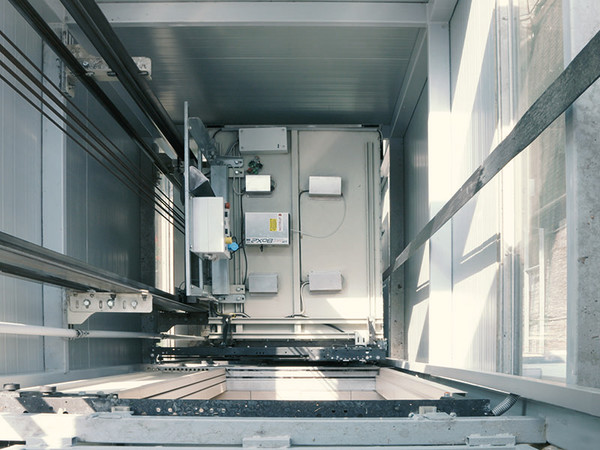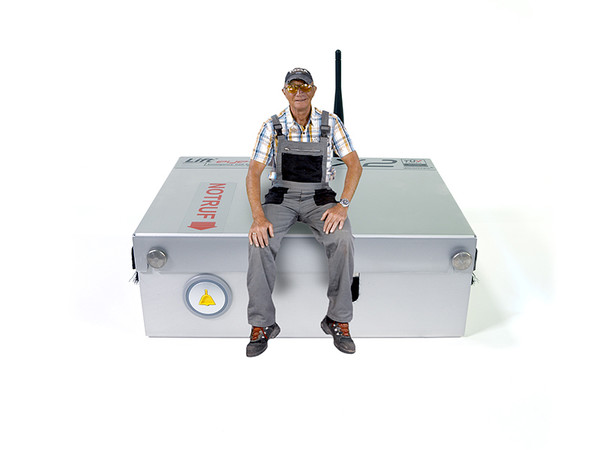All IP lift emergency call: Improved safety and less effort
Today, people in every walk of life and sector are talking about digitalisation. This also encompasses lift emergency calling.
Lift operators, lift users, assembly and maintenance companies, alarm receiving centre (ARC) operators: IP technology has something for everyone. Telecommunications providers have begun to terminate analogue transmission technology (e. g. PSTN, ISDN). This transformation affects all network solutions in mobile communications as well as in the landline sphere.
The problems arising as a result, such as reception errors and the associated repeated transmission attempts, are for the most part attributable to lift emergency call devices that were made for the network conditions required in the past. However, the conversion required as a result to digital emergency call systems also offers the opportunity to streamline and automate processes and ensure more efficiency and speed in emergency call management.
Concepts for cost reduction and quality enhancement are associated with this development and hence the order of the day is "Convert now!"
Current pictures from the lift car
 Photo: © Kristian Schark / alcomtec aufzugsmanagement & -notruf GmbH
Photo: © Kristian Schark / alcomtec aufzugsmanagement & -notruf GmbHAll IP systems can transmit reports and audio and picture data in a data stream, comparable with other Voice over IP service providers. The advantage is that more than one transmission route, the data channel (e. g. data SIM card) is used. An additional voice channel can be dispensed with.
This permits national roaming and best coverage for selecting the local providers with the strongest reception. Data security is guaranteed through encryption and secure transmission in VPN.
Advanced emergency call systems allow the emergency call control centre not just to establish a crystal clear voice connection, but also retrieve current pictures from the car. Only upon triggering of the emergency call by the users themselves can a picture be transmitted from the car - and only then!
Improved safety
This gives the emergency call control centre, which in the currently valid EN 50518:2020 is designated as alarm receiving centre (ARC), the opportunity of verifying the emergency situation on the spot and can in the context of an intervention shorten the rescue chain (e. g. danger in delay). However, it can also determine whether anyone at all is in the car and whether people need to be rescued. Consequently, unnecessary deployments and costs can be avoided.
IP systems eliminate the time-consuming dialling procedure via DTMF tones. By actuating the emergency call key, the message is transmitted without time delays, because every emergency call system is permanently connected to the alarm receiving centre (online). Malfunctions are detected immediately and not only upon the three-day test call according to EN 81-28.
As part of the prescribed operating checks on the spot, tests of the emergency call system can be conducted without involving the control centre staff. Partially automated operating checks are initiated by a keystroke combination of the emergency call keys. This involves checking the electromechanical function of the emergency call key, location of the car, functionality of the microphone, loudspeaker and pictograms as well as transmission and connection to the ARC. The test process is confirmed by the tester or lift attendant and documented in the ARC. There are no unnecessary waiting times for the tester on the spot.
Less effort and more time
 Photo: © Kristian Schark / alcomtec aufzugsmanagement & -notruf GmbH
Photo: © Kristian Schark / alcomtec aufzugsmanagement & -notruf GmbHThe prescribed testing processes also involve less effort in the control centre and there is more time for processing genuine emergency calls made by people. Such innovative system solutions conserve resources and achieve a greater message throughput rate (number of messages per time unit) during routine operating checks.
The alarm receiving centre (ARC) of the manufacturer can transmit via All IP messages received to intervention partners or other alarm receiving centres (interface S6, S7 according to EN 50518). The currently used protocol is proprietary; whether or not standardised protocols could map such processes is currently under examination.
The emergency call system provides standard interfaces such as CANbus, RS485 or RS232 in order to transmit information and key data from the lift controller or to connect lift attendant modules to it.
In the context of digitalisation, the use of All IP emergency call systems permits performance enhancements for improved passenger safety.
By Herbert Kritsch
Together with Margarete Landertshammer, the author is managing director of alcomtec aufzugsmanagement & -notruf GmbH in Vienna.
More informations: alcomtec.at





















Write a comment